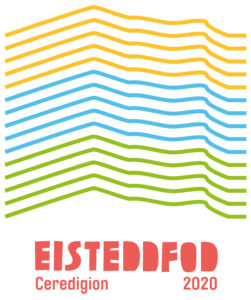In October 2019 I joined a panel at ADE Green conference in Amsterdam exploring the environmental footprint of food. In this blog, I bring a few ideas back from our European friends.
The production of food has a major impact on climate, biodiversity, land, water, and of course our health. A shift away from meeting all our human protein needs from animal sources towards a more plant-based diet is taking place in society, and event menus are reflecting this change.
The Swedish WWF calculated how much greenhouse gases a meal can be responsible for in order for us to achieve the goal of the Paris Agreement (staying within 1.5 degrees global warming) and feed all world citizens. The outcome is 0.5 kg CO2e per main meal, and is called the ‘One Planet Plate’. The UK average for a meal is around 2Kg C02e.
Three festivals in Europe particularly have experimented with ways to calculate the carbon footprint of their dishes, and explored ways to create dishes with a lower CO2 impact.
Roskilde Festival (DA), capacity 120,000, has an established and ambitious sustainable food program, notably achieving 90% organic food in 2017. In 2018 they embarked on food footprinting with tech start-up CarbonCloud, using its climate impact calculator, CarbonAte. All 400 food options served during the festival by 100 different food vendors were marked with climate labels, making it easier for buyers to make sustainable choices and enable the festival to measure the climate impact of all aspects of its food operations.
Roskilde is also partnered with the Danish Innovation Fund to test a number of eco-friendly projects, like solar cooking and insect-based meats. One onsite restaurant served the ‘diet of the future’, and the Danish beer giant Tuborg launched an exclusive new organic lager.
Also alongside me on the ADE panel was Maartje Nelissen, from Dutch catering company The Food Line Up. Together with Dutch festival Lowlands, 55,000 capacity, they developed a concept restaurant; Brasserie 2050. The menu focused on the global issue of how we are going to provide food to almost 10 billion people in 2050. They designed future proof dishes made from 50 ingredients of ‘today and the future’. All dishes were given an accurate C02 measurement and were served with a story of the ingredients in the context of a solution, for example a smart technologist, driven farmer or visionary entrepreneur.
Shambala festival (UK) also worked with CarbonCloud to offer their food concessions access to the CarbonAte tools to measure their food carbon impacts. 25% of traders used the tools to create a One Planet Plate, displayed campaign posters onsite and were tagged in the festival app, and provided information about their low-impact dishes on menu boards. Examples of dishes include (all in KgC02e per meal); a vegan hotdog, 0.2; Falafel in pitta, 0.3-0.47; full veggie breakfast, 0.9. Happy Maki’s vegan sushi roll, 0.35 kgC02e has now won the people’s vote for best food at the festival and is also frequently up for industry food awards.
Shambala did an analysis of their crew food, collecting data on energy, water use, and all ingredients for the 10,000 meals provided in crew catering. The average footprint was 1.1kg per meal, half the UK average, and double a One Planet Plate – showing that there are reductions to be achieved even with a vegetarian menu.
So, what are the rules of thumb we can work with when choosing food stalls, writing food procurement policy or tenders for events? Reducing meat and dairy is signiifcant, consider avoiding beef and lamb particularly. Avoiding air freighted produce makes a difference, and sourcing locally and seasonally is a good choice generally. If you want to take steps toward measuring and communicating food impacts to consumers or for internal auditing, check online for various tools.
I see a delicious future at events, where progressive food policies compel or steer caterers to innovate and provide food that is fit-for-the-future, and consumers making choices based on clear and simple climate-impact labelling of food.
























